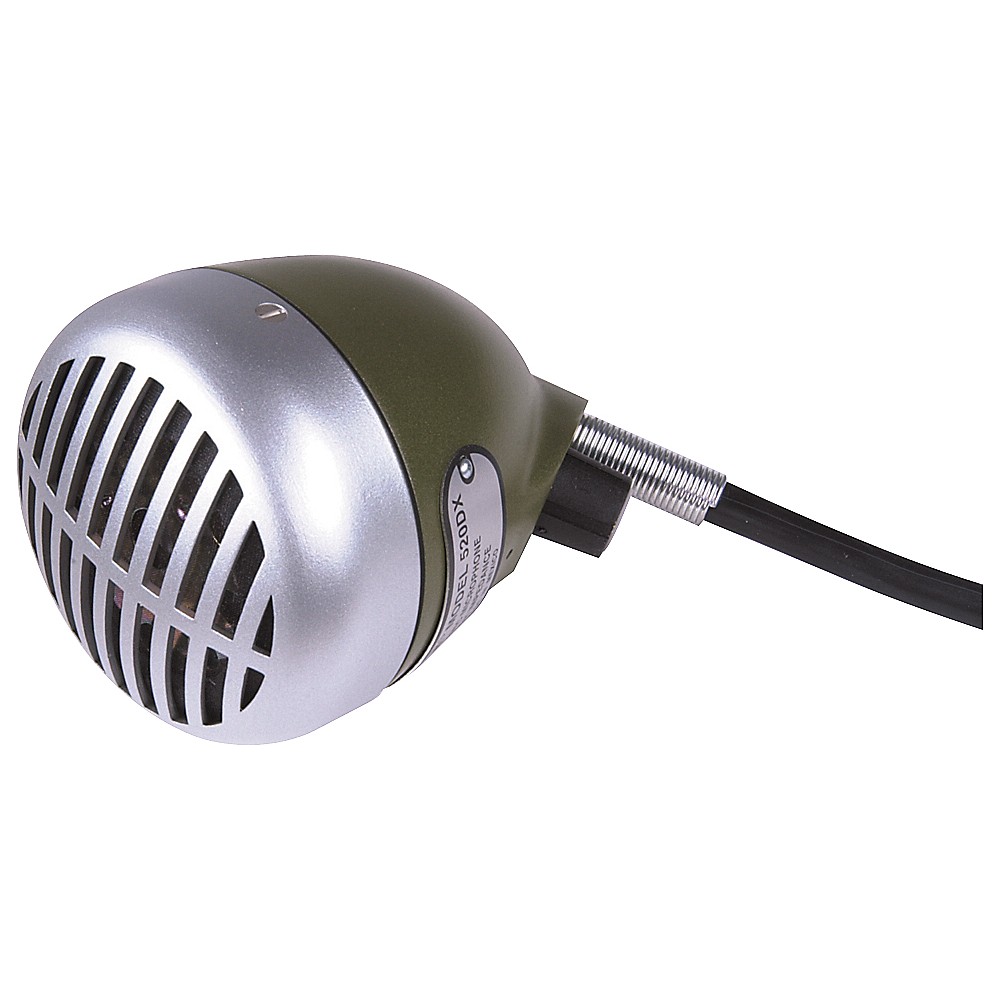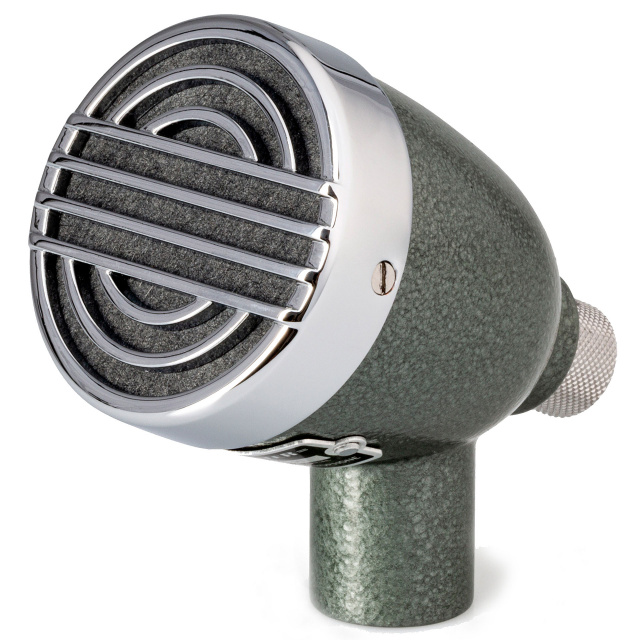If you're in the market for a good harmonica microphone--and who isn't?--you might want to check out the offerings below. Before you do, though, you'll want to download the FREE comprehensive introduction to the subject written by Greg Heumann of BlowsMeAway Productions. Here's the link: www.tradebit.com/filedetail.php/101745351-all-about-harmonica-microphones-pdf
Two of the most common harp mics used by amplified blues players are the Shure Green Bullet and the Astatic JT-30. Both of them are so-called bullet mics; they're fairly big and, for some beginning players, a bit unwieldy. The Green Bullet gives you a somewhat more distorted and raunchier sound than the Astatic; both have a high output, meaning they tend to drive whatever amp you plug them into very hard. It's that "hard" that most players are after: high output, pouring through the preamp and power tubes, creates the kind of ballsy distortion, compression, "crunch," that players want. Click on the icon below to check out new, off-the-shelf version of the Green Bullet. (If you're interested in buying an old Astatic, skip ahead to Dennis Gruenling's unparalleled collection down below):


Hohner, the harmonica company, recently debuted their own version of a bullet mic: the Harp Blaster. It's a fantastic mic--a little smaller in diameter than a Green Bullet, which makes it easier to cup, and the sound is ballsy. Just what you'd hope for. Click on the icon below to check it out:

Not every harp player uses a bullet mic; in fact, not every harp player uses a harp mic period. Me, for example. Many years ago, in 1984, I purchased a Shure PE5-H, a plastic bodied vocal mic, and not a particularly expensive one. But it turns out to be the perfect mic for the way that I play, especially when paired--as I pair it--with small, old tube amps of 5-12 watts. Here's my mic, and here's a link to a recent video in which I'm playing it.
The key point: your harmonica mic is one of the most personal and individualized decisions you will make, and what is right for other players isn't necessarily what will sound and feel most right to you.
The other kind of microphone that a blues harmonica might consider purchasing is the sort of dynamic vocal mic that you sing and play through--a mic that captures the acoustic sound of the harp and pushes it through a P.A. system. Since I mostly play through an amp, not a P.A., I hadn't given this angle much thought until recently, when I had the chance to listen to Ronnie Shellist, a tone master, play a duo gig. The mic he was singing and playing through was so much better than anything I'd heard (and MUCH better than a Shure SM58, the industry standard) that I immediately went out and ordered one for myself.
The mic in question is a Sennheiser e835. It's quite reasonably priced at $100 and it's gotten rave reviews at Musician's Friend and Amazon. So I'm not alone in thinking it's something special. It's slightly brighter than other vocal mics and you may want to tweak the treble down slightly on the mixer. But then: wow! Big full beautiful sound for harp and full power for vocals. (Click on the image below for specs, reviews, and ordering info):


If you'd prefer to pay a little (or a lot!) more some personal attention and a better mic--sometimes older, sometimes brand-new and custom made--you should check out the purveyors below.
BlowsMeAway Productions, hosted by Greg Heumann, offers some pretty nifty hand-crafted harp mics, too, along with wireless systems, cables, repairs and an innovative in-line volume control an innovative in-line volume control used by a long list of pros. I love his Bulletini mic: a half-size alternative for those who want the vintage Astatic look but want something less bulky to cup.
http://www.blowsmeaway.com/

Dennis Gruenling, one of the greatest living blues harp players, also happens to have a remarkable collection of harp mics from the classic era, especially old Astatic JT-30s. He restores and sells them at competitive prices--generally in the $300-400 range, but every mic is carefully assessed and refurbished in a way that delivers authentic vintage sound. You really need to check out his stuff, including the individualized YouTube videos in which he demos every mic he's selling.
https://badassharmonica.com/collections/microphones
Bottle 'O Blues mics offer an intriguing lightweight alternative to the bullet-or-dynamic-mic conundrum. It's easy to cup and hold, but hard to describe, so I'll urge you to take a look. FREE worldwide shipping, too:
http://www.bottleoblues.com/
